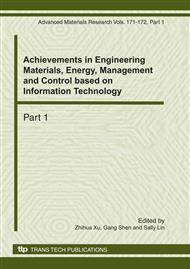p.167
p.171
p.175
p.179
p.183
p.188
p.193
p.197
p.201
Carbon Emissions Embodied in the International Trade of China
Abstract:
This paper used input-output table and the energy consumption data by sector to estimate the effect of international trade on carbon emissions of China in 2007. The result shows that international trade has played a great part in increasing China’s carbon emissions. China is a net carbon exporter, with carbon emissions embodied in exports 583.4Mt, and emissions embodied in imports from 186.0 to 476.8 Mt, according to different assumptions taken. Besides, international trade increases the global emissions and makes the problem of global warming worse. Therefore the paper suggests that it is necessary to change the present ‘producer responsibility principle’ used in regional carbon accounting and allocate certain part of responsibility of the carbon emissions to consumers.
Info:
Periodical:
Pages:
183-187
Citation:
Online since:
December 2010
Price:
Сopyright:
© 2011 Trans Tech Publications Ltd. All Rights Reserved
Share:
Citation:


